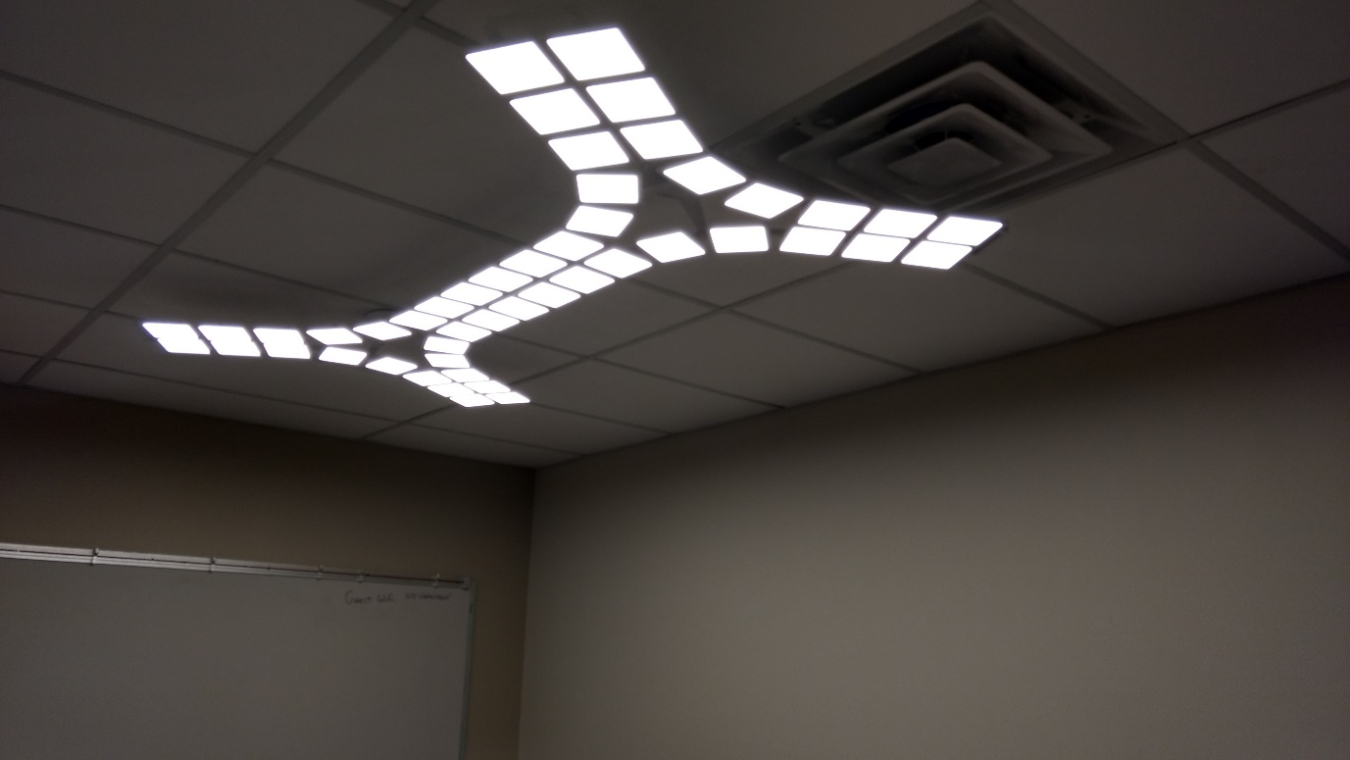
Limited efficacy and high cost are often cited as the major barriers to widespread market adoption of OLED lighting. With the help of DOE funding, OLEDWorks developed and demonstrated the technology required to produce OLED lighting panels with high energy efficiency and excellent light quality. In partnership with Acuity Brands Lighting, the high-performance OLED panels were integrated into a multi-panel luminaire that produces practical levels of illumination.
Based on a low-cost integrated light-extraction substrate architecture that avoids the use of metal grids, OLEDWorks developed the white OLED stack and encapsulation technology, which uses a stacked white OLED architecture in combination with internal light extraction and solid-state encapsulation. The OLED panels developed by the project produce high-quality warm-white light.
OLEDWorks demonstrated 80 lm/W efficacy at a typical brightness range of 2000-3000 cd/m2 on large-area panels. Those panels have an emitting area of 105 cm2 and produce 100 lumens per panel. With 24 panels, the Trilia OLED luminaire developed by Acuity produces 2,200 lumens with 85% uniformity, an efficacy of nearly 60 lm/W, a CRI of 88, a CCT of 3200K, a Duv of 0.001, and an R9 of 76. The OLED luminaire also scored well with the new IES TM-30-15 standard, having a fidelity index (Rf) of 84 and a gamut index (Rg) of 99.
The high-performance OLED lighting panel technology has been scaled up and demonstrated on a large-scale OLED manufacturing line. Working with an integrated-substrate supplier and patterning vendors, OLEDWorks was able to successfully build a supply chain for high-quality patterned integrated substrates, and was able to produce more than 500 OLED panels using those substrates on the company’s production OLED coater, achieving the desired performance characteristics over several production runs with adequate yield.
This is a significant advance in the state of the art for OLED lighting, which is expected to be a complementary light source to the more advanced LED technology that’s rapidly replacing traditional forms of lighting. Many of the technologies developed during this project will be leveraged in OLEDWorks’ next generation of OLED light engines. This project has helped pave the way toward energy-efficient OLED lighting products that are expected to reach 100 lm/W within the next few years. (January 2017)
Return to Research Highlights.

